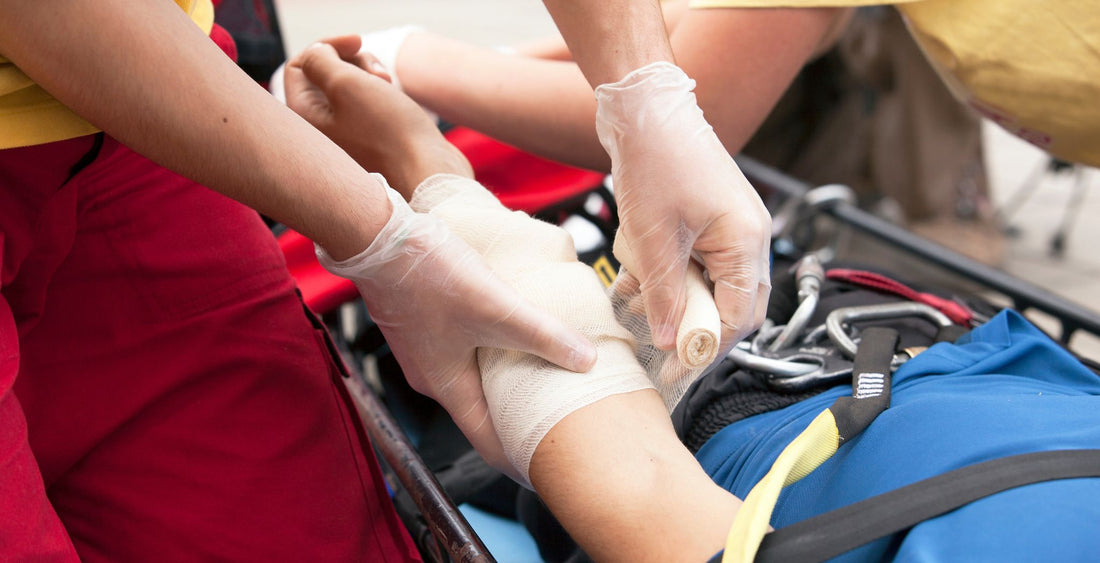
Burn Care: Essential First Aid Treatment and Self-Care Guidelines
Share
We all know accidents can happen at any time, and one of the most common injuries is from getting burned. Whether it's a minor burn from the sun or a more serious injury caused by fire or chemicals, knowing how to administer proper burn care is something we should all be familiar with.
1. Understanding Burns: Types and Severity

Before delving into burn care, it's important to understand the different types and severities of burns. Burns are generally classified into four different categories:
- First-degree burns: These are minor burns which only affect the outermost layer of the skin. They are characterised by redness, pain, and minor swelling. Medical attention isn’t usually needed.
- Second-degree burns: These burns go deeper into the skin, causing blistering, increased pain, and a risk of infection. Medical attention may be required.
- Third-degree burns: These burns penetrate all layers of the skin, appearing charred or white. These burns require immediate medical attention and care is needed to ensure further injury doesn’t result. Often the nerve endings are damaged and pain is not present.
- Fourth-degree burns: The most severe type of burns, affecting not just the skin but also the underlying bones, muscles, and tendons. Immediate medical attention is required, and great care is needed to ensure further damage is not caused by moving the patient or removing clothing.
2. Immediate First Aid for Burns

In the event of a burn injury, providing prompt first aid is essential to prevent further damage and infection. Follow these steps for immediate burn care:
- Remove the Source of the burn: Distance the person from the source of the burn as soon as possible, whether it's the sun, hot water, fire, a chemical or a hot surface.
- Cool the Burn: For most burns, hold the burned area under cool (not cold) running water for at least 20 minutes to ease the pain and reduce the extent of the injury. For chemical burns, check water doesn’t react with the substance first. For third and fourth degree burns call 111 immediately for emergency assistance.
- Do Not Pop Blisters: Popping blisters can lead to infections, so it's best to leave them intact. Instead, cover the burn with a clean, non-stick dressing. Do not use anything with fat or oil to treat the burn such as butter as this will cause more harm.
3. The Best Dressings for Burn Wounds

For first and some second degree burns, we recommended
Hydrogel Dressing such as Burncare’s Burn Gel which provides a moist environment that promotes healing while soothing pain. For all other burns, we recommend medical assistance is sought to manage the burn.
4. Burn Treatment Guidelines

When it comes to burn care, adhering to proper treatment guidelines can make all the difference. Here are some essential guidelines to follow:
- Keep the Burn Clean: Clean the burn wound gently, then apply awater soluble gel to sooth the burn site and help prevent infection. We recommend a water soluble gel because it can be easily washed off if further medical treatment is required.
- Cover the Burn: Use sterile dressings to cover the burn and change them regularly to maintain a hygienic environment.
- Pain Management: Over-the-counter pain relievers can help manage the pain associated with burns, but avoid aspirin for children.
5. Burn Self-Care and Recovery

Aside from administering immediate first aid and following treatment guidelines, taking good care of yourself during the recovery phase is crucial. Here are some self-care tips for burn recovery:
- Stay Hydrated: Drink plenty of water to support your body's healing process and prevent dehydration.
- Eat a Balanced Diet: Consume foods rich in vitamins and minerals to promote tissue repair and overall wellness.
- Avoid Sun Exposure: After the burn has healed, protect the area from the sun's harmful rays to prevent scarring and hyperpigmentation.
Conclusion
Knowing how to provide proper burn care is indispensable, and being equipped with the right knowledge can make a significant difference in the healing process. From immediate first aid for burns to effective self-care during recovery, adhering to burn treatment guidelines is essential for a successful outcome. Remember, in severe burn cases, always seek medical attention promptly.
Disclaimer- The information provided in this blog post is intended as general information for entertainment purposes only. We are not healthcare providers and we do not hold any healthcare qualification. The content contained on this site is in no way intended as medical advice or as a substitute for medical treatment and we are not making any recommendations for your personal situation.
